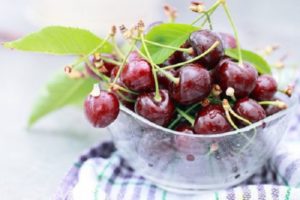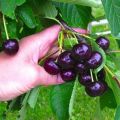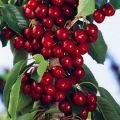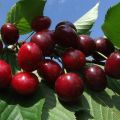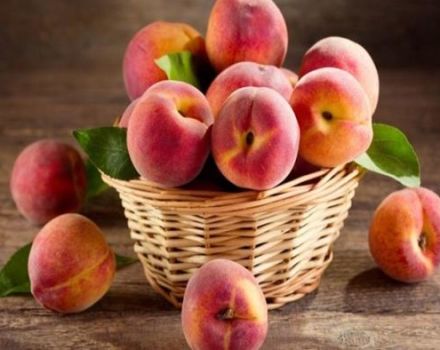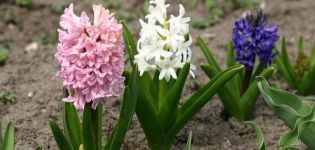Planting, growing and caring for cherries in the Urals, choosing suitable varieties
Cherry growing in the Urals is a common practice for experienced gardeners. Planting and caring for cherries in the Urals requires an integrated approach and adherence to important agricultural techniques. Providing comfortable conditions for the growth of crops, it will be possible to consistently receive a harvest
Climatic characteristics of the region
The climatic conditions of the Urals are far from ideal, therefore, it is recommended to grow only those varieties of sweet cherries that are highly resistant to adverse effects. The main difficulties that gardeners face are: cold winters, short and cool summers with an average temperature of 20 degrees, and little rainfall in summer.
What qualities should cherries have?
When cultivating cherries in a garden, it is important to choose a fruit crop with suitable characteristics. It is recommended to plant trees with frost resistance down to -30 degrees. It is also necessary to take into account the yield indicator, the height of the plantings and the specifics of care.
Recommended varieties for the Urals
Choosing from a wide variety of good and best varieties for planting in the Urals, you should give preference to specimens from the rating of the most popular species. Cultivating proven varieties will help you avoid common mistakes and get a good harvest.
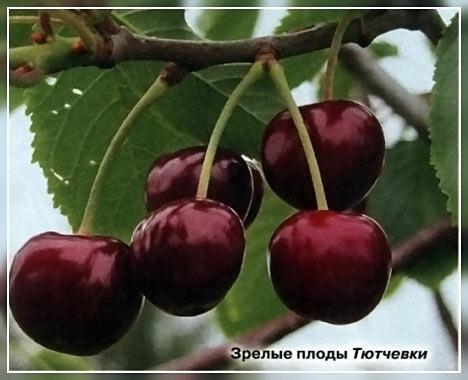
Early ripening
Early ripe cherries begin to ripen in early to mid June. Early varieties of crops for the Urals include:
- Iput. The variety is characterized by a spreading pyramidal crown and large inflorescences. The berries are medium-sized, dark red, heart-shaped.
- Leningrad black. A tall variety with small but juicy fruits. The shape of the berries is oblate-ovoid, the taste has honey notes.
- Maiskaya. Vigorous cherry, resistant to many infections and frost. Fruits are small, round, with firm and sweetish pulp.
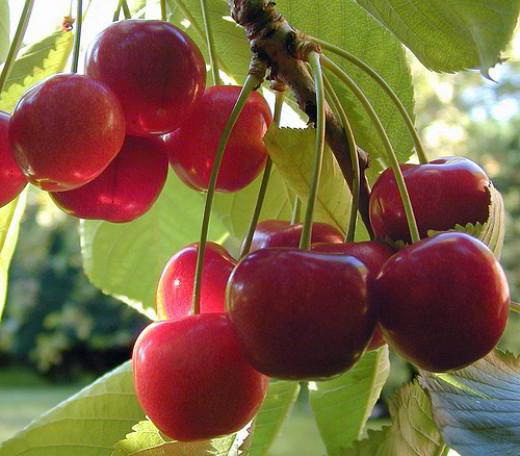
Mid-season crops
The ripening dates of mid-season varieties are in mid-summer. Among these varieties are common:
- Annushka. Vigorous trees with a spreading crown and fruits weighing up to 10 g.The berries have a juicy pulp, pronounced aroma and sweet taste.
- Adeline. A productive variety that forms medium-sized trees. Fruits of bright red color have a weight of up to 6 g and firm pulp.
- Teremoshka. A self-fertile variety that requires pollination from other crops. Ball-shaped trees are disease-resistant and produce honey-tinged fruit.
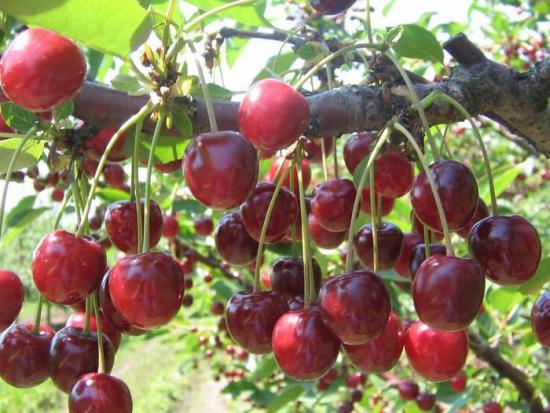
Late varieties
Late-ripening varieties in the Urals are grown in rare cases due to the harsh climatic conditions. When planting late varieties, complex care and protection from frost are required. The varieties of late cherries that are suitable for cultivation in the Urals include:
- Michurinskaya late. Fruits weighing 6-7 g ripen at the end of August. The berries are round in shape, with a deep red skin and juicy flesh with a sweet taste.
- Bryansk pink. Trees of this variety have a dense crown and medium-sized fruits with pinkish skin. The flesh of the berries is dense, yellowish. The crop tolerates long-term storage and transportation.
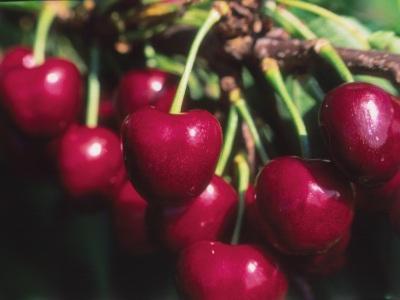
Winter-hardy tree varieties
The winter hardiness indicator is one of the important criteria for choosing a cherry variety. The most resistant varieties include:
- The first swallow. Heart-shaped berries weigh more than 5 g and can withstand a sharp drop in temperature. The skin of the fruit is shiny, the skin is dense.
- Firstborn. A universal high-yielding variety of medium late ripening. The fruits ripen in July and reach a weight of 7 g. The crop has a juicy pulp and a sweet taste.
Landing features
When planting cherries in the Urals, it is necessary to follow a number of standard procedures and take into account the climatic features of the region. To avoid difficulties in growing and get a good harvest, you need to determine the appropriate timing for planting, choose a place on the site and prepare the soil.
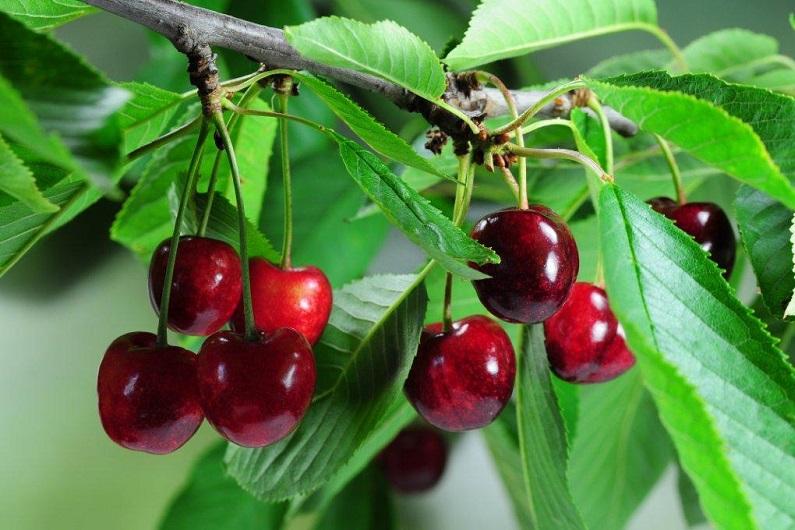
Recommended timing
Due to the climatic conditions in the Urals, cherry trees are planted exclusively in spring. It is necessary to wait until the snow cover disappears and the likelihood of recurrent frosts disappears, and then transfer the seedling to a permanent place of growth.
In the case of autumn planting, the seedlings will not have time to take root and adapt to new conditions, as a result they will freeze out with the onset of winter.
Optimal place for cherries
The place in the garden for placing cherry seedlings must meet a number of requirements. In particular:
- solar lighting throughout the day;
- no through blowing and protection from strong wind gusts;
- low groundwater level (not higher than 2.5 m).
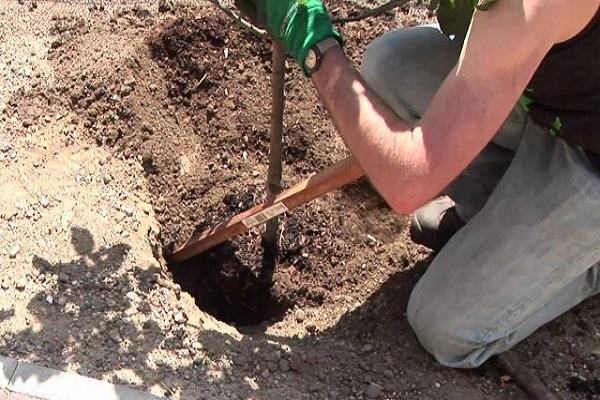
Preparing soil mixture for a seedling
Cherry loves soil with a neutral acidity index, so liming should be carried out before planting. On light sandy loam soil, 300-400 g of lime are used per square, and on heavy loamy soil - 600-800 g. Organic fertilizers (wood ash, rotted manure, compost) are added to the soil mixture.
Tree planting technology
It is recommended to transfer cherry seedlings to a permanent place using standard technology. To disembark, you must:
- Dig a planting hole in a suitable area. The size of the seedling hole is about 70 x 90 cm.
- The earth is mixed with organic fertilizing and a small hill is poured into the center.
- The roots of the seedling are soaked in a growth stimulator and the plant is placed in the central part of the hole.
- Sprinkle seedlings with earth, compact the soil and water abundantly.
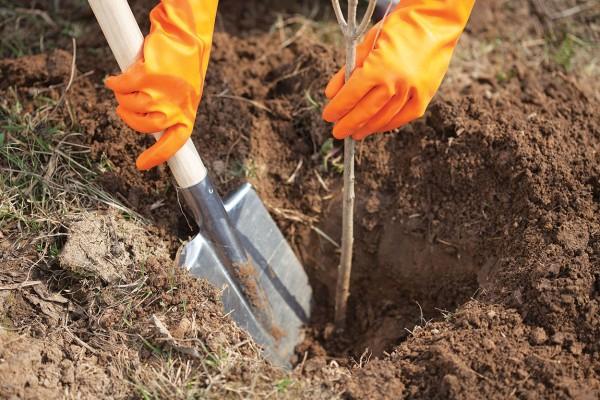
We organize “Ural” cherry care
Caring for cherry trees when planting in the Urals involves an integrated approach. Depending on weather and climatic conditions, the frequency of watering, the use of fertilizers, the implementation of crown formation and preventive treatments change. Taking into account the specifics of the region and carrying out the appropriate care, it will be possible to ensure the active growth and development of plantings.
How often to water
Sweet cherry is one of the moisture-loving berry crops and requires regular abundant watering. Moisten the soil as it dries, periodically checking the condition of the earth. During the period of intensive ripening of the berries, waterlogging can lead to cracking of the crop, and a lack of liquid in the soil leads to drying of the roots. Each irrigation is accompanied by loosening of the soil so that water penetrates to the roots lying on the lower layers of the earth. Loosening is carried out only in the absence of a layer of mulch.
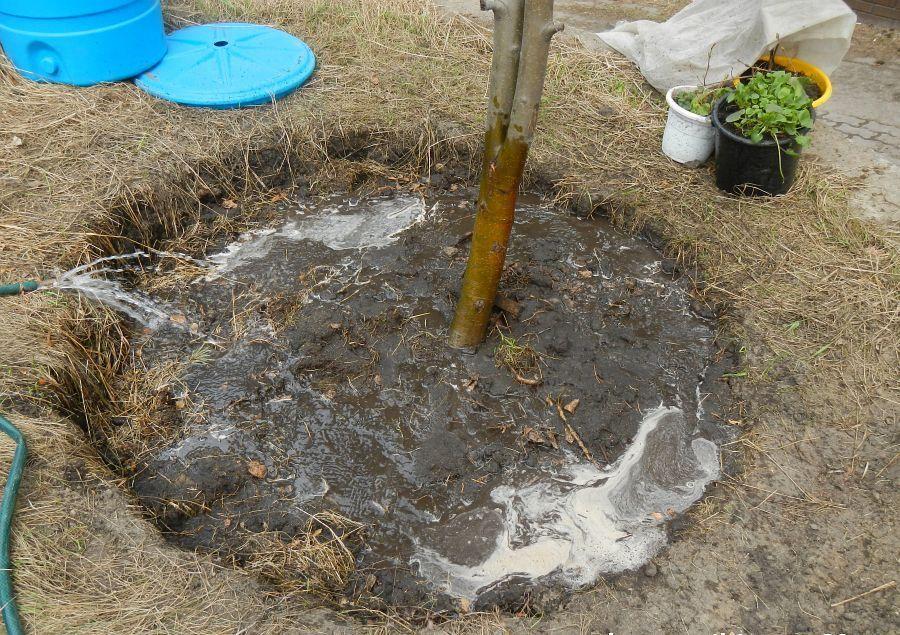
What to feed
Since cherries actively grow green mass, a minimum amount of nitrogen should be used when fertilizing the crop. Top dressing with nitrogen can be applied to the soil only at the beginning of spring and in small quantities. Nitrogen fertilizers stimulate the growth of shoots and inhibit their lignification.
Also, cherries are fed with calcium nitrate to reduce the risk of gum disease. In late summer or early autumn, cherries are sprayed with a mixture of potassium sulfate and superphosphate. Foliar top dressing using potassium monophosphate is performed in August to prepare the culture for the upcoming cold snaps.
Barrel circle care
Immediately after the spring planting or before the autumn frosts, the area of the near-trunk circle is covered with protective mulch. The mulching process simultaneously serves several functions, including the following:
- warming of roots by preventing soil freezing;
- reflection of the sun's rays;
- retention of moisture in the soil, exclusion of rapid evaporation when exposed to the sun;
- control of germination of weeds that do not break through the mulch;
- ensuring the looseness of the soil.
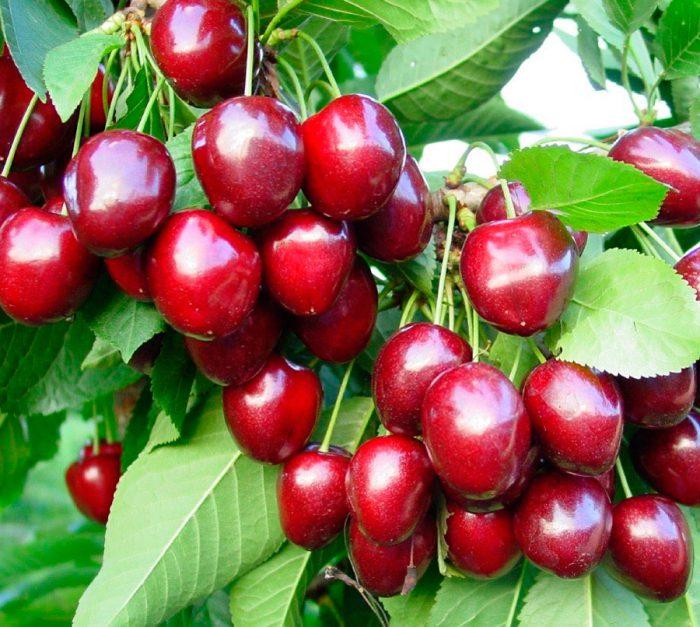
Formative pruning
Tree shaping can be done in spring or early autumn. Pruning is carried out to limit the growth of plantings in height so that the branches can be bent or covered for the winter. To slow down growth, remove the central conductor, thickened foliage and damaged parts of trees.
Pruning also helps to form a large number of new branches on which the inflorescences grow. In addition, compact trees begin to bear fruit at an earlier date.
Preventive treatments
Sweet cherries are rarely affected by diseases and pests, but an unfavorable climate can increase the risk of ailments. It is recommended to constantly inspect the trees and, when the first signs of damage are found, spraying with fungicidal and insecticidal preparations.
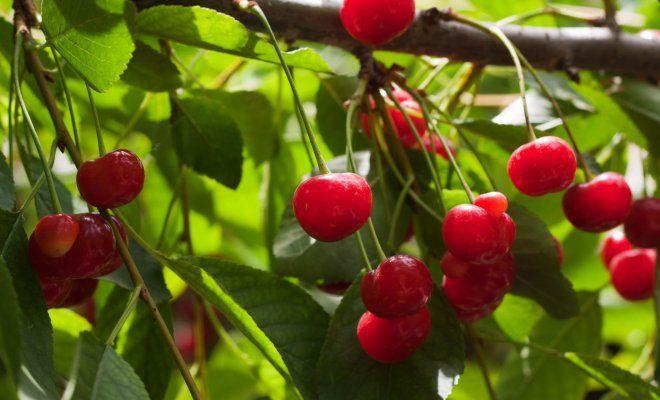
For preventive purposes, you can perform treatments with immunomodulators and adaptogens. Such spraying is carried out in late August - early September. Prevention helps the berry crop easily endure the cold winter in the Urals.
Getting ready for the Ural frosts
You can start preparing for a cold snap in early August. First of all, you should take care of the aging of the wood. If in the first decade of August the growth of shoots does not stop, it is required to remove the tops of the shoots by pinching. This technique accelerates the maturation of wood and improves the frost resistance of the plantations.
To speed up leaf fall, it is recommended to spray the trees with a urea solution. Processing will speed up the formation of flower buds and prepare the wood for frost. If, during the wintering process, the bark of trees begins to crack from a strong temperature drop, the tree trunk is whitewashed.
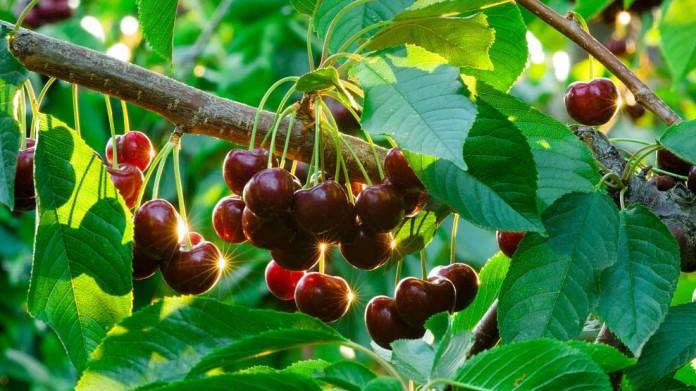
For the winter period, young seedlings are protected with a covering material - burlap, opaque polyethylene cloth or dense cloth... To fix the material, supports are used, which are placed in the ground next to the plantings.
Growing errors
Cultivating cherries in the Urals, many novice gardeners make standard mistakes. These include:
- Wrong choice of predecessors. Suitable precursors for cherries are pears, apples, carrots, peas and beans. Unsuitable predecessors - cereals, cabbage, strawberries, onions, cherries, plums.
- Violation of the rules of care. In harsh climatic conditions, it is important not to neglect agricultural technology and take a comprehensive approach to tree care.
- Bad soil. Choosing the wrong place leads to the death of plants and a decrease in the amount of harvest.
- Planting unsuitable varieties. For planting in the Urals, you need to choose only those varieties that are highly resistant to cold snaps and undergo sharp temperature changes.
Subject to agricultural technology, it will be possible to grow cherries even in the difficult climatic conditions of the Urals.
